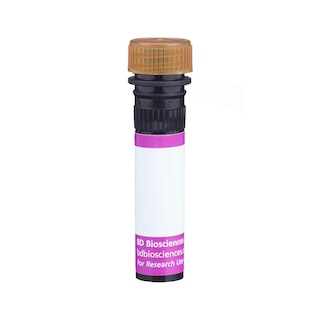-
抗体試薬
- フローサイトメトリー用試薬
-
ウェスタンブロッティング抗体試薬
- イムノアッセイ試薬
-
シングルセル試薬
- BD® AbSeq Assay
- BD Rhapsody™ Accessory Kits
- BD® OMICS-One Immune Profiler Protein Panel
- BD® Single-Cell Multiplexing Kit
- BD Rhapsody™ TCR/BCR Next Multiomic Assays
- BD Rhapsody™ Targeted mRNA Kits
- BD Rhapsody™ Whole Transcriptome Analysis (WTA) Amplification Kit
- BD® OMICS-Guard Sample Preservation Buffer
- BD Rhapsody™ ATAC-Seq Assays
- BD® OMICS-One Protein Panels
-
細胞機能評価のための試薬
-
顕微鏡・イメージング用試薬
-
細胞調製・分離試薬
-
- BD® AbSeq Assay
- BD Rhapsody™ Accessory Kits
- BD® OMICS-One Immune Profiler Protein Panel
- BD® Single-Cell Multiplexing Kit
- BD Rhapsody™ TCR/BCR Next Multiomic Assays
- BD Rhapsody™ Targeted mRNA Kits
- BD Rhapsody™ Whole Transcriptome Analysis (WTA) Amplification Kit
- BD® OMICS-Guard Sample Preservation Buffer
- BD Rhapsody™ ATAC-Seq Assays
- BD® OMICS-One Protein Panels
- Japan (Japanese)
-
Change country/language
Old Browser
Looks like you're visiting us from United States.
Would you like to stay on the current country site or be switched to your country?
BD Pharmingen™ Alexa Fluor® 700 Mouse Anti-Mouse CD45.2
クローン 104 (RUO)

Flow cytometric analysis of CD45.2 on mouse splenocytes. Splenocytes from SJL/J mice (left panel) or C57BL/6 mice (right panel) were stained either with a
Alexa Fluor® 700 Mouse IgG2a, κ isotype control (shaded) or with the Alexa Fluor® 700 Mouse Anti-Mouse CD45.2 antibody (unshaded). Histograms were derived from gated events based on light scattering characteristics for lymphocytes. Flow cytometry was performed on a BD™ LSR II flow cytometry system.

Flow cytometric analysis of CD45.2 on mouse splenocytes. Splenocytes from SJL/J mice (left panel) or C57BL/6 mice (right panel) were stained either with a
Alexa Fluor® 700 Mouse IgG2a, κ isotype control (shaded) or with the Alexa Fluor® 700 Mouse Anti-Mouse CD45.2 antibody (unshaded). Histograms were derived from gated events based on light scattering characteristics for lymphocytes. Flow cytometry was performed on a BD™ LSR II flow cytometry system.


Flow cytometric analysis of CD45.2 on mouse splenocytes. Splenocytes from SJL/J mice (left panel) or C57BL/6 mice (right panel) were stained either with a
Alexa Fluor® 700 Mouse IgG2a, κ isotype control (shaded) or with the Alexa Fluor® 700 Mouse Anti-Mouse CD45.2 antibody (unshaded). Histograms were derived from gated events based on light scattering characteristics for lymphocytes. Flow cytometry was performed on a BD™ LSR II flow cytometry system.
Flow cytometric analysis of CD45.2 on mouse splenocytes. Splenocytes from SJL/J mice (left panel) or C57BL/6 mice (right panel) were stained either with a
Alexa Fluor® 700 Mouse IgG2a, κ isotype control (shaded) or with the Alexa Fluor® 700 Mouse Anti-Mouse CD45.2 antibody (unshaded). Histograms were derived from gated events based on light scattering characteristics for lymphocytes. Flow cytometry was performed on a BD™ LSR II flow cytometry system.

Flow cytometric analysis of CD45.2 on mouse splenocytes. Splenocytes from SJL/J mice (left panel) or C57BL/6 mice (right panel) were stained either with a
Alexa Fluor® 700 Mouse IgG2a, κ isotype control (shaded) or with the Alexa Fluor® 700 Mouse Anti-Mouse CD45.2 antibody (unshaded). Histograms were derived from gated events based on light scattering characteristics for lymphocytes. Flow cytometry was performed on a BD™ LSR II flow cytometry system.

Flow cytometric analysis of CD45.2 on mouse splenocytes. Splenocytes from SJL/J mice (left panel) or C57BL/6 mice (right panel) were stained either with a
Alexa Fluor® 700 Mouse IgG2a, κ isotype control (shaded) or with the Alexa Fluor® 700 Mouse Anti-Mouse CD45.2 antibody (unshaded). Histograms were derived from gated events based on light scattering characteristics for lymphocytes. Flow cytometry was performed on a BD™ LSR II flow cytometry system.


Regulatory Statusの凡例
Any use of products other than the permitted use without the express written authorization of Becton, Dickinson and Company is strictly prohibited.
Preparation and Storage
Product Notices
- Since applications vary, each investigator should titrate the reagent to obtain optimal results.
- An isotype control should be used at the same concentration as the antibody of interest.
- Alexa Fluor® 700 has an adsorption maximum of ~700nm and a peak fluorescence emission of ~720nm. Before staining cells with this reagent, please confirm that your flow cytometer is capable of exciting the fluorochrome and discriminating the resulting fluorescence.
- Alexa Fluor® is a registered trademark of Molecular Probes, Inc., Eugene, OR.
- The Alexa Fluor®, Pacific Blue™, and Cascade Blue® dye antibody conjugates in this product are sold under license from Molecular Probes, Inc. for research use only, excluding use in combination with microarrays, or as analyte specific reagents. The Alexa Fluor® dyes (except for Alexa Fluor® 430), Pacific Blue™ dye, and Cascade Blue® dye are covered by pending and issued patents.
- Caution: Sodium azide yields highly toxic hydrazoic acid under acidic conditions. Dilute azide compounds in running water before discarding to avoid accumulation of potentially explosive deposits in plumbing.
- For fluorochrome spectra and suitable instrument settings, please refer to our Multicolor Flow Cytometry web page at www.bdbiosciences.com/colors.
- Please refer to www.bdbiosciences.com/us/s/resources for technical protocols.
関連製品


最近閲覧済み
The 104 monoclonal antibody recognizes the CD45 (Leukocyte Common Antigen) present on all leucocytes of most mouse strains (eg, A, AKR, BALB/c, CBA/Ca, CBA/J, C3H/He, C57BL, C57BR, C57L, C58, DBA/1, DBA/2, NZB, SWR, 129). This alloantigen was originally named Ly-5.1, and this was the designation at the time that the antibody was characterized. The designation was later changed from Ly-5.1 to Ly-5.2 to conform with the convention that the .2 alloantigen designations be assigned to the C57BL/6 strain. mAb 104 has been reported not to react with leucocytes of the mouse strains expressing the CD45.1 alloantigen (eg, RIII, SJL/J, STS/A, and DA). CD45 is a member of the Protein Tyrosine Phosphatase (PTP) family: its intracellular (COOH-terminal) region contains two PTP catalytic domains, and the extracellular region is highly variable due to alternative splicing of exons 4, 5, and 6 (designated A, B, and C, respectively), plus differing levels of glycosylation. The CD45 isoforms detected in the mouse are cell type-, maturation-, and activation state-specific. The CD45 isoforms play complex roles in T-cell and B-cell antigen receptor signal transduction. The 104 antibody has been reported to inhibit some responses of B cells, from mice expressing the CD45.2 alloantigen, to certain antigens and LPS. In addition, reduction of serum IgG levels and amelioration of autoimmune renal pathology were reported in mAb 104-treated systemic lupus erythematosus-prone mice.
Development References (11)
-
Johnson P, Greenbaum L, Bottomly K, Trowbridge IS. Identification of the alternatively spliced exons of murine CD45 (T200) required for reactivity with B220 and other T200-restricted antibodies. J Exp Med. 1989; 169(3):1179-1184. (Biology). View Reference
-
Morse HC 3rd, Shen FW, Hammerling U. Genetic nomenclature for loci controlling mouse lymphocyte antigens. Immunogenetics. 1987; 25(2):71-78. (Biology). View Reference
-
Ogimoto M, Mizuno K, Tate G, et al. Regulation of lipopolysaccharide- and IL-4-induced immunoglobulin heavy chain gene activation: differential roles for CD45 and Lyb-2. Int Immunol. 1992; 4(6):651-659. (Biology). View Reference
-
Shapiro HM. Practical Flow Cytometry, 3rd Edition. New York: Wiley-Liss, Inc; 1995:280-281.
-
Shen FW, Tung JS, Boyse EA. Further definition of the Ly-5 system. Immunogenetics. 1986; 24(3):146-149. (Biology). View Reference
-
Shen FW. Monoclonal antibodies to mouse lymphocyte differentiation alloantigens. In: Hammerling GJ, Hammerling U, Kearney JF, ed. Monoclonal Antibodies and T-cell Hybridomas; Perspectives and Technical Advances. 1981:25-31.
-
Suzuki K, Oida T, Hamada H, et al. Gut cryptopatches: direct evidence of extrathymic anatomical sites for intestinal T lymphopoiesis. Immunity. 2000; 13(5):691-702. (Biology). View Reference
-
Yakura H, Ashida T, Kawabata I, Katagiri M. Alleviation of autoimmunity in BXSB mice by monoclonal alloantibody to Ly-5 (CD45). Eur J Immunol. 1989; 19(8):1505-1508. (Biology). View Reference
-
Yakura H, Kawabata I, Ashida T, Katagiri M. Differential regulation by Ly-5 and Lyb-2 of IgG production induced by lipopolysaccharide and B cell stimulatory factor-1 (IL-4). J Immunol. 1988; 141(3):875-880. (Biology). View Reference
-
Yakura H, Kawabata I, Shen FW, Katagiri M. Selective inhibition of lipopolysaccharide-induced polyclonal IgG response by monoclonal Ly-5 antibody. J Immunol. 1986; 136(8):2729-2733. (Biology). View Reference
-
Yakura H, Shen FW, Bourcet E, Boyse EA. On the function of Ly-5 in the regulation of antigen-driven B cell differentiation. Comparison and contrast with Lyb-2. J Exp Med. 1983; 157(4):1077-1088. (Biology). View Reference
Please refer to Support Documents for Quality Certificates
Global - Refer to manufacturer's instructions for use and related User Manuals and Technical data sheets before using this products as described
Comparisons, where applicable, are made against older BD Technology, manual methods or are general performance claims. Comparisons are not made against non-BD technologies, unless otherwise noted.
For Research Use Only. Not for use in diagnostic or therapeutic procedures.
